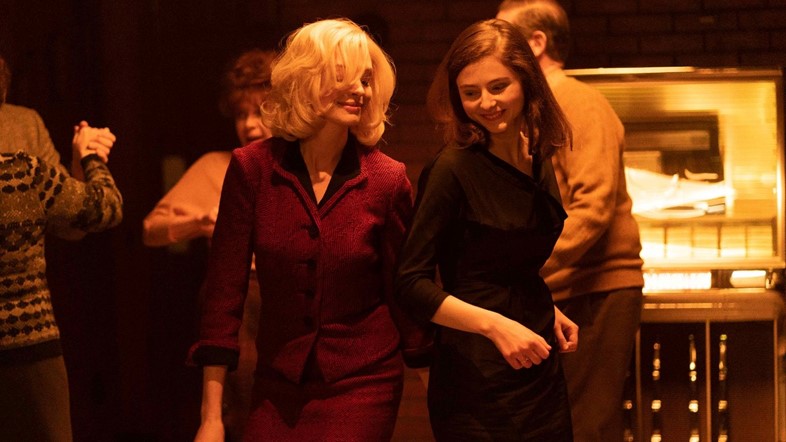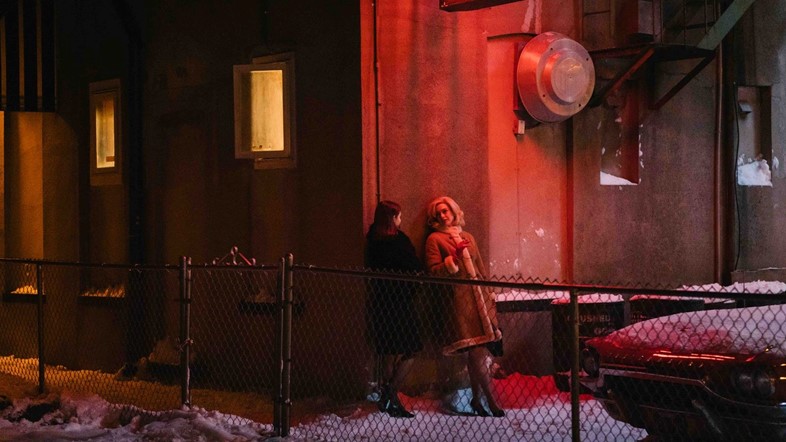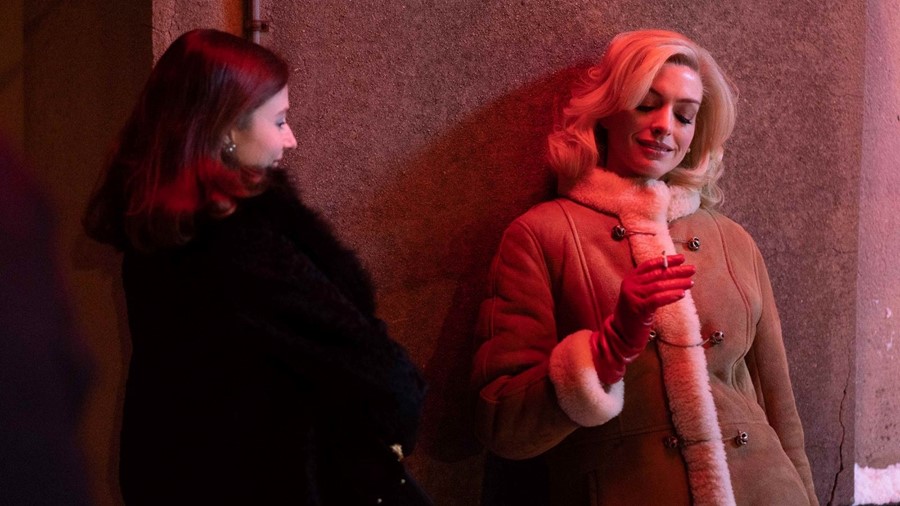As Eileen arrives in UK cinemas, director William Oldroyd and lead actor Thomasin McKenzie discuss their dark tale of repression and desire
Where British director William Oldroyd’s debut feature film Lady Macbeth was about oppression, his second is undoubtedly about repression. We first meet Oldroyd’s eponymous protagonist Eileen spying on a couple kissing in their car, parked in front of a lacklustre ocean. Eileen watches them intently – before quietly opening her car door, scooping up fistfuls of snow, and shoving it down her trousers. “You get her in a minute and a half,” says Oldroyd.
Like the explosive debut novel by Ottessa Moshfegh (who co-wrote the screenplay together with her husband Luke Goebel), Eileen tells the tale of a young woman (Thomasin McKenzie) stuck living with her alcoholic father (Shea Whigham) and employed as a prison secretary in a dreary, glacial nowhere town on the Massachusetts coast in the 1960s, whose mid-century misogyny and traditional values are yet to thaw. Eileen’s drab daily existence is punctuated by wild fantasies that play out onscreen, from secretly masturbating over prison guard colleagues while at work to imagining holding her father’s pistol to her head and pulling the trigger.
Convinced of her own ‘averageness’, Eileen considers herself a secondary character in her own story – until the blonde-bobbed, Harvard graduate Rebecca (Anne Hathaway), embodying everything Eileen believes she herself is not, arrives as the prison’s new psychiatrist. From there, the film takes a sharp swerve into Hitchcockian territory, at once a painfully acute character study, a refreshingly female-steered noir – complete with ominously roving headlights and smoke (from a car exhaust) – and a blossoming queer romance.
For Oldroyd, this intoxicating mix of genres is not entirely new terrain, with his acclaimed indie hit Lady Macbeth tracing a similar story arc of patriarchally inflicted misery that ends in violence. “Eileen is about a young woman who has a difficult relationship with a male-dominated society – a society where women’s liberation hadn’t actually begun – on some level awoken by the arrival of another character who provokes this desire, this obsession, which is very similar to what happened with Sebastian and Katherine [the leads in Lady Macbeth],” says the director. “I didn't realise until we’d actually made the movie that it was so similar.”
Compared to Florence Pugh’s steely Katherine, McKenzie says her character is much more “fearful of the world” – and strange. The actor, known for bringing a timid vulnerability to roles in Last Night in Soho and Leave No Trace, undercuts Eileen’s awkwardness with a simmering rage – finding the fury beneath a face likened offhandedly by Rebecca to a “plain but fascinating” girl “in a Dutch painting”. Staving off desire is one of Eileen’s main preoccupations: chewing on sweets before spitting them back into their wrappers; and, in the book, harbouring an unusual fascination with laxatives and their effects, a detail that was thankfully omitted in the adaptation. At its core, Eileen harnesses the particular discomfort of being a young woman uneasy in her own skin and uncovers its dangerous potential. “It’s not gone into so much in the film, but she grew up in a very religious family,” says McKenzie. “Being ashamed of her feelings of desire and sexuality, being ashamed and disgusted by herself, and feeling unlovable – all of these things add up to her not allowing herself to feel that strong desire, to reach the climax of that kind of desire.”

In one memorable scene, Eileen retreats to Rebecca’s bathroom to catch her breath, rifling through the cupboards before spotting a single pubic hair atop a bar of soap. “I remember it was difficult to try and catch the pubic hair in the light,” says McKenzie with a laugh, adding that she “cleaned [her] hands very well after that. There was hand sanitiser and everything.” Even now, says Oldroyd, the identity of the owner remains a mystery: “No one in the props department was prepared to share the information.”
Oldroyd will be the first director to bring Moshfegh’s words to the screen (a fleet of other adaptations are soon to follow, including Andrew Haigh’s McGlue and Yorgos Lanthimos’ My Year of Rest and Relaxation), but he says that the author’s cult following did not intimidate him. “This felt like we had two things going for us,” says Oldroyd. “One: there’s such rich imagery in the book that it was going to be easy to find on the screen, and two: we had Ottessa with us to help. Crucially, she was not precious about trying to [translate] every bit of the book for the screen, because then you can get in trouble.”
The process of adapting Eileen was made even smoother by the abundance of 60s visual references to draw on – whereas, with 1860s Northumberland-set Lady Macbeth, Oldroyd “didn’t have the benefit of much photography”. “There are so many Eileens we discovered,” he says. “It was less about finding one aesthetic, and more about being as faithful as we could to the 60s. In any adaptation, you have to work out where you want to be faithful, and which elements you are going to contemporise. It had to feel grounded with the costumes, hair and make-up and then you can put the slightly stylistic twist into some of the shots we got, the way we cut it.”

One crucial difference from Moshfegh’s original novel is the cementing of its queer themes, a less tangible undercurrent running through the book. In one scene, Eileen and Rebecca take to the dancefloor – for which, Oldroyd reveals, Hathaway was taught choreography but McKenzie (who is “terrified of dancing”) deliberately was not. “We actually saw you cringe for real,” teases Oldroyd. The scene leads to a kiss in a parking lot that catches Eileen by surprise.
“I don’t think it’s clear why Rebecca kisses her,” says Oldroyd, remaining coy about the pair’s potential romance and noting that the camera is trained on Eileen’s face, a character with a tendency towards “misinterpretation”. “I’m happy for people to take what they want from that kiss in the sense that it’s the completion of a beautiful moment. It’s the only time we see the snow falling in the movie and it’s a beautiful snow, a magical snow under this sign, which gives us this beautiful red light that falls on them. It’s totally hushed. It’s a magical moment suspended outside of the rest of the film.”
Eileen is out in UK cinemas on December 1.
